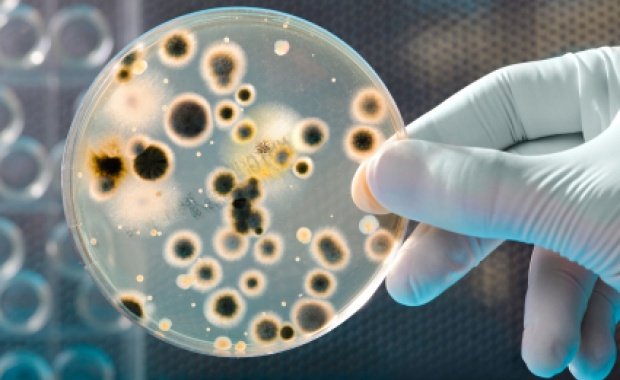Haslea Ostrearia is one of the benthic microalgae found in almost all parts of the world. This species is unique because it produces a certain type of blue-green pigment which is soluble in water, called marennine. In France, oysters that change color to green on the gills and labial palp have a higher selling price than usual, around 20%, so this species has a high economic value. This species is not easily cultivated, so it needs nutrients and the right conditions for the cultivation process.
The initial stage of H. ostrearia cultivation is on a laboratory scale with an initial volume of 200 and 400 mL. The cultivation aimed to produce a single microalgae strain with high density. The most important thing in cultivation is sterile environmental conditions. Another important thing to consider is the quality of the culture media, which consists of nutrients and the media used.
The nutrients needed by H. ostrearia aim to support the growth are absorbed from the environment. In general, the required nutrients by microalgae are classified into two, macro and micronutrients. Elements of nutrients needed by microalgae in large quantities are called macronutrient, including nitrogen, phosphorus, magnesium, potassium, sodium and calcium, while the required nutrients by microalgae in small amounts are called micronutrients, including manganese, iron, nickel, vanadium, silicon, zinc, boron, molybdenum and cobalt. In addition to micro and micronutrients, Vitamin B 1 , B 12 and biotin are also needed as they are an essential element to spur growth. In microalgae culture, culture media is used as a place to grow and breed, so the availability of nutrient elements, both macro and micronutrients are necessary for the culture media.
H. ostrearia growth is very dependent on the environmental condition, to obtain a high population growth and heavy biomass, the ecological state must support it. Environmental factors that influence the growth of microalgae include light intensity, temperature, pH, and salinity. Light is necessary as an energy source to assist photosynthesis. In microalgae laboratory culture, sunlight can be replaced with TL lights. H. ostrearia requires an ideal light intensity of 182.5 µmol photons m -2 s -1 (TL lamp 55 Watt) with photoperiod 14: 10 hours (light: dark).
The optimum temperature of H. ostrearia to grow appropriately is 21 o C. The temperature is very influential on chemical reactions. If the chemical reaction experiences a rise in temperature, the reaction speed will increase. A 10 ° C temperature rise can accelerate faster reaction to 2-3 times because in the metabolic process a series of chemical reactions occurs, then the temperature rise to a specific value limit can accelerate the metabolic process. High temperatures that exceed the maximum temperature will cause denaturation of proteins and enzymes and will cause cessation of metabolic processes in cells.
The degree of acidity is a sensitive point in microalgae measured as pH unit scale. At a certain pH, an enzyme converts the substrate into the final result, then the change in pH can reverse the activity of the protein by converting the final product back into the substrate. Salinity is very influential on the growth and distribution of microalgae. It can be known from cell osmosis in the absorption of fluids. Cells will absorb all kinds of liquids that are outside the cell membrane, which have lower levels than in cells. On the other hand, the cell will release fluid if the fluid level in the cell is lower than the outside cell.
The growth of microalgae has four phases; the phase of lag growth (induction). In this phase, the population does not change, but the size of the cell increases because organisms undergo metabolism, and new protein synthesis occurs. Water condition is still clear with transparency> 80 cm. The logarithmic (exponential) phase, this phase begins with cell density increasing continuously to the maximum phase. Yellowish to brownish water has transparency 30-60, even
Nutrient greatly influences the results of H. Ostrearia cultivation. The results of the research showed that cultivation of H. ostrearia based on several types of nutrients and water resources used, both pure seawater and activated carbon filtered seawater and additional nutrient Conway + Silicate show better growth. Seawater is more stable during the experiment, both with 200 mL and 400 mL volume.
Author:
Luthfiana Aprilianita Sari, S.Pi., M.Si
Department of Fish Health and Aquaculture
Faculty of Fisheries and Marine
Universitas Airlangga, Surabaya
Detailed information from this research can be seen in our writing at:
https://iopscience.iop.org/article/10.1088/1755-1315/236/1/012044
Optimization of Haslea Ostrearia cultivation diatoms in different mediums and nutrients
S. Arsad, C. Stavrakakis, V. Turpin, P. Rossa, Y. Risjani, LA Sari, FS Prasetiya and JL Mouget
Published under license by IOP Publishing Ltd
IOP Conf. Series: Earth and Environmental Science 236 (2019) 012044
doi: 10.1088 / 1755-1315 / 236/1/012044





